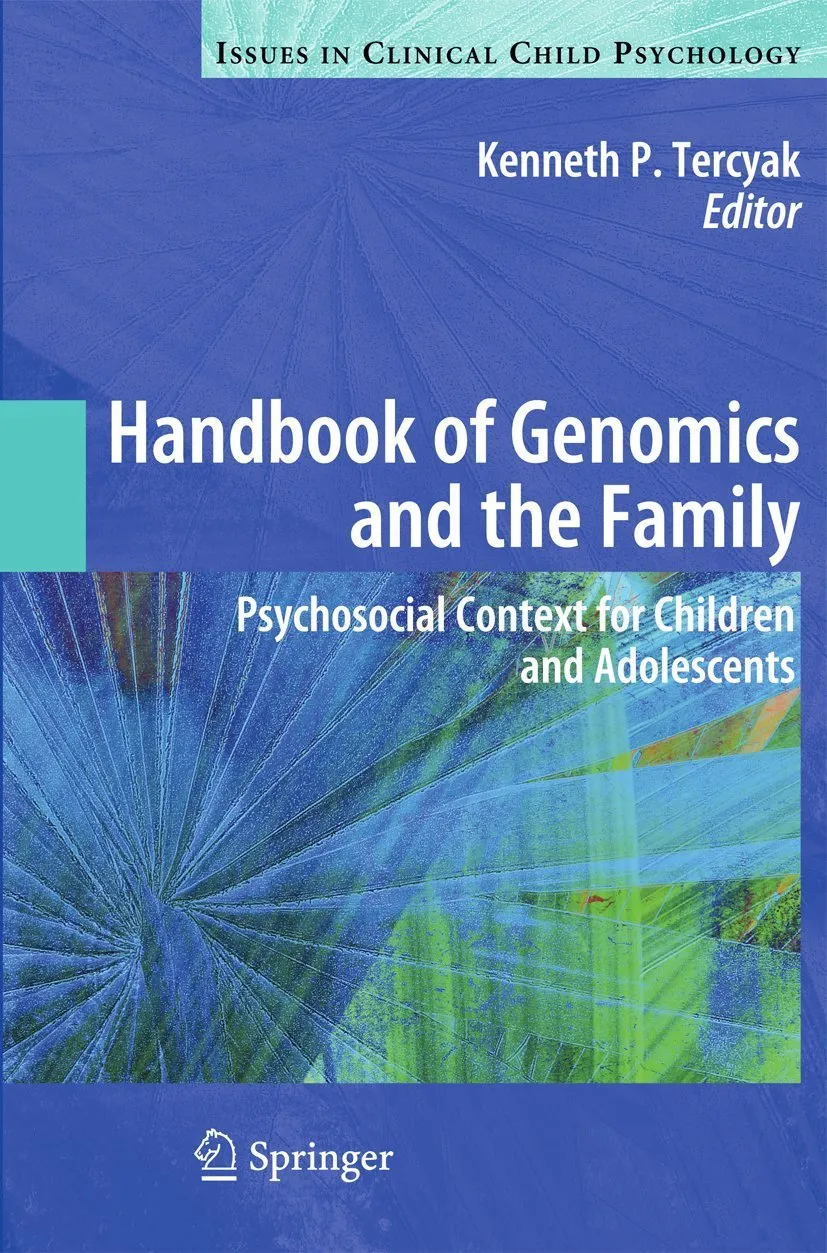Home
|
Products
|
9789356962026

Handbook of Genomics and The Family | Paperback
by Tercyak K.P.
Highlights

9781461423959
ISBN

Tercyak K.P.
Author

615
Pages

1050 gm
Weight

English
Language

2010
Year

N/A
Edition

Paperback
Binding
₹24463
₹27182
Today, individuals have greater access to information about their healththaneverbefore(Randeree,2009;Eysenbach,2008).Muchofthis changeisdue,inlargepart,toadvancesinbiotechnologyandtheseque- ing of the human genome (Manolio & Collins, 2009). It is now possible, forexample,forindividualstologontotheInternetand,forafeeofs- eral hundred dollars, order an at-home DNA collection kit and have the resultsofamyriadofgenetictestsdelivereddirectlytotheire-mailinbox (Gurwitz&Bregman-Eschet,2009).Insomecases,thesetestresultsmay indicatepersonalriskforcommonchronicdiseases,suchascertainforms ofcancer,diabetes,cardiovasculardisease,andseveralothers.Companies marketing these test kits often claim that promoting greater access to and awareness of the association between genes and health, and one's genetic susceptibilities to disease, leads to more proactive and insig- fulmethodsofindividualhealthmanagement(Hogarth,Javitt,&Melzer, 2008). Moreover, it is consistent with an emerging trend in medicine - that of consumer-oriented medicine - which places health information toolsdirectlyinthehandsofpatientsunderthepremiseoffosteringbetter patient-providercollaboration(Silvestre,Sue,&Allen,2009). Though the principles behind this direct-to-consumer approach to genetics seem laudable and perhaps even exciting, there is consid- ablecontroversyastowhat,ifany,utilitytheinformationactuallyholds (Geransar&Einsiedel,2008;Wasson,Cook,&Helzlsouer,2006).Unlike geneticteststhatarediagnostic(e.g.,chromosomeanalysisforDowns- drome)orhighlypredictive(e.g.,BRCA1andBRCA2testingforhereditary breast-ovarian cancer risk), this new wave of presymptomatic predictive genetictestsforcommondiseaseyieldsresultsthataremuchmoreunc- tainbecausethestatisticalmodelsonwhichtheyarepresentlybasedare imperfectandwithlimiteddata(Ng,Murray,Levy,&Venter,2009). Theabovescenarioraisesmanyquestionsfortoday'shealth-carec- sumers. For example, for whom is this information applicable, and for whatpopulationsorsubpopulationsisitnot?Underwhatcircumstances might this information be useful, and when should it be disregarded as irrelevant?Andperhapsmostimportantly,what,ifanything,canbedone inlightofinformationaboutpersonalgeneticrisktoeffectivelylowerthe oddsofbecomingsickandraisetheoddsofstayinghealthy? vii viii PREFACE Becausetheprevalenceofmostdiseasesvariesasafunctionofage, gender, race/ethnicity, and other personal characteristics, answers to these questions are complex and many are just beginning to be und- stood(Khouryetal. ,2009).Someexpertshaveconcludedthattheanswers tosuchquestionsremainoutofreachatthepresenttimeandmayc- tinue to be elusive for another 5-10 years (Frazer, Murray, Schork, & Topol,2009).Yet,twenty-?rstcenturyhealth-careconsumers,providers, and policy makers face these choices now about incorporating personal genetic information into health management and often do so without a complete and accurate understanding of the potential impact of their decisionsonmultiplelevels(Carlson,2009).
Online store of medical books
Discover a comprehensive range of medical books at our online store. From anatomy and physiology to the latest clinical guidelines, we've got you covered.
Trusted by students, educators, and healthcare professionals worldwide. Browse top publishers and expert-authored titles in every medical specialty. Enjoy fast shipping, secure payments, and easy returns. Your one-stop destination for quality medical knowledge at your fingertips.
Whether you're preparing for exams or expanding your clinical expertise, our curated collection ensures you have the right resources at hand. Dive into detailed illustrations, case studies, and up-to-date research that enhance your understanding and practical skills.
We regularly update our inventory to include the latest editions and newly released titles, helping you stay current in the ever-evolving medical field. Our advanced search and filtering tools make finding the perfect book quick and hassle-free.
Join our community of lifelong learners and medical enthusiasts. Sign up for exclusive discounts, early access to new arrivals, and personalized book recommendations tailored to your professional interests.
